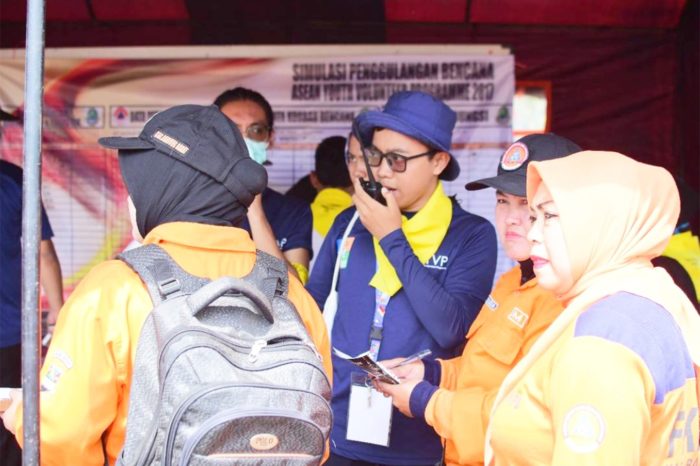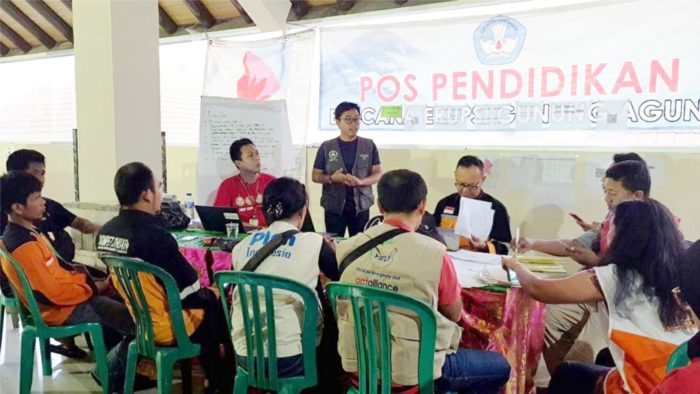FAJAR SHIDIQ
The Indonesian youth on disaster risk reduction (iydrr) forum began to take shape in 2015, as a group of jakarta university students participating in disaster management activities recognised the need, and the opportunity, to increase the all-important engagement of youth throughout disaster management practices. iydrr’s co-founder and chairman, fajar shidiq, spoke to the aha centre about his experience in expanding this strategic and modern movement.
“We all kept meeting at disaster management events– it was like ‘you again, you again,’–always the same people,” Fajar recalls of his participation in disaster management activities during his early university days. “In 2015 we started discussions about creating something more formal and united, and in late 2016 IYDRR was established.”
While still relatively new, the organisation has already begun to engage strongly with the wider national disaster management movement, and even dipped its toes into regional and international circles. However, Fajar highlights the importance of developing a strong presence locally, as the organisation continues to advance its presence within the Indonesian disaster management sector. Youth were traditionally more engaged in response efforts, as volunteers. However, with more recent inclusion in other disaster management aspects–such as policy development and decision-making–such youth groups starting to gain more opportunities to engage. Examples of this increase include the engagement of youth within the ASEAN-ERAT Induction Courses, with the AHA Centre recognising the importance of youth participation within One ASEAN, One Response efforts.
Fajar sees a variety of positive elements for increased youth engagement within overall disaster management processes. The range of backgrounds and skills offeredby youth organisations, such as IYDRR, can be of great benefit for the disaster management sector. Members are studying, or hold degrees, from a wide range of study areas, all of which can be valuable within disaster management efforts. Such a context opens the door for organisations such as IYDRR to provide great value within its key working areas of capacity development, advocacy and community empowerment, and for the voice of youth to be commonplace within all aspects of disaster management. “This is what we are pushing for, slowly of course, but to have a stronger engagement in all aspects of disaster management. We want the youth to have a voice.”
While the organisation works with extremely limited funding and relies heavily on the passion and time provided by its more than 100 members, a range of achievements have already begun to appear. Fajar highlights the design of infographics–and ultimately the use of these tools after the 2018 Jakarta earthquake–as a key example of what was perhaps considered a small and unimportant activity holding great final value. “After the earthquake these infographics were being shared everywhere–people were contacting us and requesting we send them,” he recalls. It is such outcomes that IYDRR hopes to replicate and expand, with an aim to develop a range of tools to support disaster risk reduction and response
- CATEGORY
- TAGS


